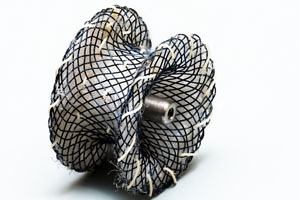Normal Heart Structure
Atrial Septal Defect

What is an Atrial Septal Defect (ASD)?
An atrial septal defect (ASD) is a hole in the heart between the two upper pumping chambers. A very small hole in this area is called a patent foramen ovale – this is a normal finding found in approximately one third of the population. Those with a PFO should avoid deep sea diving.
Symptoms
Most children will have no symptoms. Those with larger defects may become breathless, tire more easily, have slower weight gain and be more prone to respiratory infections.Diagnosis
A clinical examination will usually reveal a heart murmur. An echocardiogram will diagnose an ASD. An ECG will also be performed and sometimes a Chest X-ray. Rarely more complicated ASDs may require more detailed imaging tests.

Treatment
Small ASDs require no treatment. Some get smaller as the child grows. Larger ones may require treatment. The treatment approach depends on the size and shape of the hole and symptoms. Some babies may initially require treatment with liquid medicines called diuretics, which make the work of the heart easier.
Holes which need operations may be closed either by keyhole or open-heart surgery depending on the individual characteristics of the defect. Both approaches require a general anaesthetic. The keyhole approach (via an interventional cardiac catheter) places a permanent device in the heart via a tube which is passed to the heart from a vein in the leg. ASD closure devices are often dumb bell shaped and made of a special mesh of a metal alloy (nitinol). Surgery involves closing the hole with a patch. If surgery is required it may be possible to perform the operation such that the scar is on the back of the chest. Dr Naqvi works with an excellent team of NICOR audited congenital cardiac surgeons and if necessary will refer your child to the one who is best for your child’s heart.
ASD Device

Keyhole Procedure to close ASD

Cardiac Surgery

Prognosis
The outlook for children with an isolated ASD is excellent in the vast majority of cases. Dr Naqvi has cared for many babies and children with ASDs and has followed them up until adulthood. She says “Having an ASD early in life does not stop children doing well in sports or hinder academic achievement later on. I know many who are in school teams and even competing at county level.” There are also plenty of well-known individuals who have had successful careers despite having an ASD including actors and athletes. Below are a few examples.
Interesting Facts
Valerie Azlynn is an American actress who had a surgical ASD repair at 13 years of age. She has appeared in many movies and TV shows including Cold Case, CSI, How I Met Your Mother, The Big Bang Theory, Two and Half Men, Rules of Engagement and more. Lauren Cheney USA Olympic Soccer player had open heart surgery to repair an ASD when she was 3 years old. Kate Jackson one of the original Charlie’s Angels actresses and now a Hollywood producer and director has also successfully had an ASD surgically repaired.
For more information about ASDs please see the following links:
Disclaimer: The opinions and facts shown in this article are as accurate and up to date as possible, but are provided as general “information resources”, which may not be relevant to individual persons. This article is not a substitute for individual assessment and always take advice from a paediatric cardiologist who is familiar with the particular person.





